Communication Breakdown
I’ve been living and working abroad almost two years now and I’ve learned a lot about the world, other cultures, and myself. Without a doubt, the single most difficult aspect of being an expat is the inability to communicate even the simplest of messages. What would be basic, menial, everyday tasks in the U.S. quickly escalate to become overwhelming obstacles overseas. Thank you, communication barriers…
I firmly believe in the positive growth the experience of teaching English as a second language in foreign countries provides. I think everyone should live outside their home country (and comfort zone) for at least 6 months. People learn one way and assume that one way is the right way or the only way. People can take every advantage they have in life for granted. Living abroad realigns your perspective.

There are too many instances to go into (unless I wanted this article to be about 5,000 words), so I’ll choose a few of the moments that stand out in my mind. The first of which is the workplace, where I spend the majority of my time. When I obtained my TEFL Certificate, the program assured me I’d be immersed in schools and programs where the administration not only assumed I’d only communicate in English, but demanded I only communicate in English… at least in the classrooms.
They neglected to mention my colleagues – the other faculty – who don’t know how to speak or comprehend a single bit of my native language (and vice versa). While in Korea, I taught at a private, after-school, language academy with teachers who all went to college for English.
Yes, you read me correctly. They majored in English at their universities.
However, in spite of this they barely spoke to the native English teachers at all. The academy had students (9-15 who were more fluent than their teachers). In many cases, they knew all the grammar rules, yet had no practice speaking and were therefore too embarrassed to try. The teachers selfishly cared more about saving their own faces and reputations than welcoming foreigners into their culture – foreigners who felt isolated and often alone, living thousands of miles from home and unable to communicate with the general public.

In Turkiye, I work at a private school. It isn’t a language academy though, it’s a legitimate high school offering every subject to their students: biology, chemistry, physics, history, geography, algebra, and literature… all of which are taught by Turkish teachers, in Turkish. The faculty as well as the administration here cannot understand the English teachers, nor can we understand them without the assistance of an interpreter.
There are even day-long Saturday meetings with faculty from all the other schools during which the morning consists of a 2-3 hour general assembly conducted in (you guessed it!) Turkish. Try to imagine yourself in a situation, going to work every day and being unable to communicate or bond with any of your coworkers. Unfortunately, this is only the tip of the proverbial iceberg.
Here are a few examples:
- You’re out to eat with some friends, but you have a shellfish allergy. There are no photos on the menu and the waitress doesn’t speak any English. How do you communicate your allergy to them? If you can’t, what do you do? You get up and leave, eating somewhere else with menu pictures.
- You need a cell phone, rather the school demands you get one. So you sign a contract and get your phone from the vendor on the corner who promises you up and down that you’ll only pay about $60 a month. When the first bill arrives, you notice he’s deducted almost $80 from your account. You approach his store and try to argue, but he points to the fine print in the contract – which isn’t even written in a language you recognize. One of the nicer teachers, who’s joined you, explains hidden costs. You don’t want to pay them and if you knew up front, you’d have chosen another phone, another service, another anything. But you can’t do diddly squat now – the contract is signed. Your name, in blue ink, right there, plain as day.
- You’re on a public bus to a place you really want to visit, but have never been to before. You try asking the driver if its the correct bus; however, your pronunciation isn’t spot on and he looks at you like you’re crazy, unable to understand what you’re saying. So you shrug and sit back down for the next two hours as the bus completes its route – never once going anywhere near the place you wanted to see.
- You need a haircut. You show the stylist a photograph of what you want and he begins. He didn’t explain to you his dislike for that particular style so you leave with whatever haircut he felt like giving you. Shut up and be happy about it.
- You’re in a cafe and ask for a large decaf coffee. Decaf? What’s decaf? The barista scratches her head and hands you a cup of regular.
- You’re at a bazaar and finally find the item you’ve been looking to buy for weeks. The vendor quotes you 35 lira, but since you’ve only recently learned the numbers, you think you hear him say 85 lira. You talk him down to 40 lira and proudly walk away thinking you’ve won when in actuality, you’ve given him more money than he was originally requesting. Some haggler you make!
- You want to take a train journey to a nearby city. Once you’re there, you decide it’s a good idea to purchase your return ticket for that evening. You approach the counter and ask the woman for two tickets on the 9pm train – 21:00. Instead, she gives you two tickets for the train on the 21st of the month – three days later, but you don’t notice. 10 minutes before the last train of the night leaves, you aren’t permitted to board and you’re stuck sleeping in the station until the first morning train leaves.
- You can’t sleep on the street (obviously), so you hire a realtor to show you some apartments. As soon as you sign the one year lease, the realtor hits you with your fees: first and last months rent go to the landlord and another full month goes to him as his commission – an expense you were completely unaware of as a foreigner – or yabanci. Does he care? Nope. This is his profession, his country, and his rules. So you pay him. Once you move into your new flat, you learn there are even more fees nobody bothered mentioning to you: building maintenance, cleaning fees, garbage pickup… on top of those, there’s a sudden rotten egg smell emanating from inside the walls that comes from Allah only knows. This stench, wasn’t there when you first saw the apartment – in late September – seems to get worse as the weather warms up. Oh well, you signed the lease.
Let me give you one more…
You’re at home, slicing up some veggies for dinner and you accidentally cut off the tip of your finger. You wrap it up, applying the necessary pressure to the wound in an effort to stop the blood loss, but it keeps coming. So you bite the bullet and decide you’d better see a doctor. What’s the word for doctor again? Right, you don’t know it. So you throw on a coat and some shoes and hike half a mile to the taxi station. You show the taxi driver your wound and shrug because you don’t remember the word for hospital or emergency room – although at one point you remember it coming up in conversation with your students.

Thankfully, between body language and gestures, the driver figures out that you need to go to a hastanesi and hits the gas. Once you get there you see the meter reads 10 lira. The driver, knowing you’re stuck, shuts it off and asks you to pay him 15 lira. What can you do? Not a damn thing. So you pay him and enter the hospital. Upon your arrival in the emergency room, you’re surrounded by people screaming, shouting, and crying – none of whom speak English, not the patients, not the security guards, not the nurses, not the doctors. Nobody.
So you again show your wound and the little English they know, they use to try and rip you off because you’re a foreigner and don’t know their ways. What? you ask. 5,000 lira just to be seen by a doctor? But I thought I had national healthcare coverage paid for by my company? You’re telling me I don’t all of a sudden? And before you realize it, you’re out about $2,500 USD (money that never gets to the hospital or the doctors because the girl at the front desk who explained how much it would cost, splits it with the girl sitting next to her and they go on a shopping spree – teşekkürler).
During your appointment, the doctor pours antiseptic on your wound and redresses it, explaining to you what you have to do over the next few days to prevent infection – none of which you understand at all, because he’s speaking a mile a minute in Turkish and remember, you don’t speak Turkish. He doesn’t speak English. End of story.

I hope I’ve been able to relay just a bit of the anxiety associated with living overseas in a country that doesn’t share your native language. Life is, without a doubt, difficult, if not impossible at times as you’ve just read. I still believe that the advantages of this experience far outweigh the many disadvantages.
If you’re reading my articles and have a son or daughter graduating college in the U.S. without any means of gainful employment (or you are one yourself), consider teaching English as a second language overseas. I promise, the person who comes home will be better and stronger than the one that left.
Until Next Time…
-Justin
A Dome a Dozen
The major, visual difference between Middle Eastern nations and their Western counterparts is the skyline. While America along with most countries in Europe showcase gothic style cathedrals complete with cross-adorned steeples, Egypt, Jordan, and Turkiye have mosques and minarets instead. Many people don’t know much about mosques other than their association with Islam; however, I found the history of their development rather fascinating.

The mosque (also known as camii or mesjid) is predominantly a place of worship for Muslims, although according to Islam, people can pray anywhere they want. The very first mosque ever constructed, Masjid al-Haram, is in the Saudi Arabian city of Mecca (visitors must prove their devotion to Allah if they even hope to enter the city), surrounding one of the holiest places the Kaaba – the focal point of prayer, and why Muslims in America and Europe must always face east while they do so. Interestingly enough, the word camii is used much like ‘church’ in Christianity in that it implies both the building as well as the community of worshipers inside. A mesjid is any room used for prayer in the moment it’s being used; it can be a bedroom, kitchen, or soccer field.
One of the five pillars of Islam requires Muslims to make a pilgrimage to Mecca at least once in their lives. Similar to synagogues, mosques don’t have any requirements regarding their construction. A square building with a square room can literally be converted into an official mosque without any hiccups in the process. Be that as it may, over the past thousand years, the architectural styles have changed drastically based on location, culture, and other factors. In some countries, you might not even be able to tell a mosque from an office building when you walk past. Not so in Turkiye.
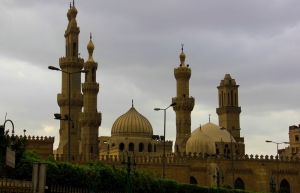
Hypostyle mosques, the earliest type, are square with inner courtyards. These are typically found in warmer climates to accommodate large numbers of worshipers for the Friday afternoon prayer. Persians began incorporating elements of their palace designs into mosques and it was in the area of modern-day Iran where the first arches (iwans) and domes appeared.
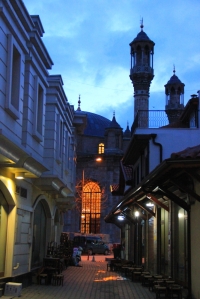
The large, central dome wasn’t introduced until the 15th century by the Ottomans. Heavily influenced by the Byzantine architecture, Turkish mosques have unique looks all to their own – looks you won’t find in North African, European, or Arabian mosques. For instance, the Blue Mosque in Istanbul was built using smooth, straight, and clean lines. It looks almost modern in many ways (close proximity to Europe influenced architecture in this area). Mosques in other areas have a much more exotic appearance.
A common feature for most mosques nowadays is the minaret (trans: lighthouse) – a tall, slender tower situated at one or more of the corners of the structure (the Hassan II in Casablanca boasts the tallest minaret). The top of the minaret is always the highest point because it’s used for the Adhan (or ezan in Turkiye) which is the call to prayer. The imam (Islamic priest or scholar) usually sings verses from the Qu’ran at least five times a day, guiding local Muslims to stop what they’re doing and join him.
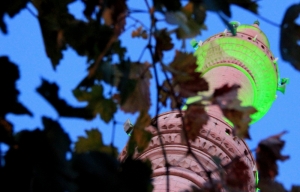
For the first hundred or so years, mosques had no minarets. The first of which was constructed in 665, supposedly in competition with Christian church steeples and bell towers. The caliph of Basra (southern Iraq) at that time wanted to increase the visibility of Islam. He hated how outwardly Christians worshiped by comparison and he encouraged his people to build minarets as well as to borrow the shapes and styles of the bell towers for them.

Outside every mosque you’ll find a water fountain. Okay, it’s not really a water fountain. It’s a bathing facility Muslims use for their pre-prayer, ritual purification – aka Ablution. Believers must cleanse their hands, feet, heads, and faces if they’ve either been with a woman (sexually) or evacuated their bowels or bladder between prayer times (leading many to ‘hold it’ more often than doctor’s might recommend).
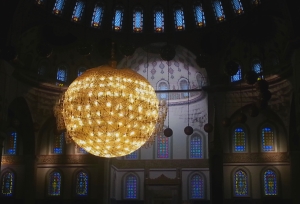
Inside most mosques are separate areas for men and women to pray, in spite of the fact that the Qu’ran mentions nothing on the issue of gender separation. Traditionally, women are permitted to occupy space behind the men, or on balconies along the edges of the main prayer hall. I’ve been told the reason for the segregation is to prevent women’s beauty from distracting the men who are supposed to be focused on Allah (why this fault belongs to the women instead of the men is beyond my level of comprehension).
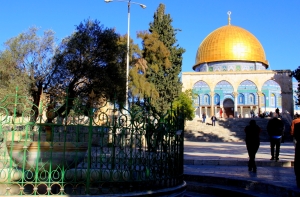
Most interpretations of sharia law allow non-Muslims to enter mosques providing they don’t sleep or eat (they also must remove their shoes as all Muslims do). One particular mosque, the Dome of the Rock – located on the Temple Mount in Old City Jerusalem, doesn’t allow any non-Muslim tourists to enter. It is also forbidden for anyone to take photographs of the interior. During this writer’s recent trip to the Holy Land, we were able to gain access to both.
On the contrary, modern Turkiye allows tourists into every mosque in every city, as long as the strict rules of conduct are followed. Bringing us full circle, the minarets and dome are what separate the skyline in Middle Eastern nations from those in Europe and the Americas. From my vantage point, there are 5-10 times as many mosques per square mile than churches in the States. That seems like a colossal waste of space to me when you consider the following two pieces of information.
One, Muslims do not have to attend services on a weekly basis in the way Jews and Christians are supposed to. While the main Friday prayer exists, it’s not mandatory to do it from the main worship area of a mosque. Two, none of the prayer times require attendance at a mosque at all. Muslims are typically allowed to pray anytime, anyplace, anywhere they so choose. They can even pray in their living rooms and many offices and schools (as well as shopping malls) come with prayer rooms for the convenience of their citizens.
Be that as it may, the beauty of the mosque architecture creates an other-worldly and exotic feel to any expats who live in those countries.
Until Next Time…
-Justin

























